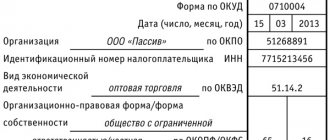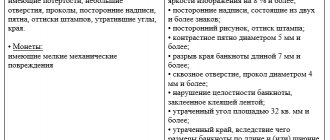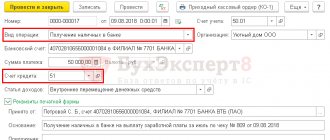What options are there to show VAT?
The amounts received and paid by the company to counterparties must be calculated without taking into account the amount of tax before they are reflected as VAT in the cash flow statement. The difficulty of calculating without VAT is that the fee is included in the payment indicators.
In accounting, it is not always possible to reflect the deposit and receipt of amounts including VAT in accounts separately. Accountants calculate revenue figures without the amount of the fee using a special algorithm.
First, the turnover amounts for debit accounts 60, 62, 76 are taken with the correspondence of credit accounts 51, 50. The resulting values are multiplied by the tariff. The calculated rate can be 10/110 or 20/120 if the VAT rate is 10 and 20%, respectively. The indicator that remains after highlighting the value will be called the “cleared from collection” amount of receipts.
There are some calculation nuances if different types of company services are taxed at different rates. In this case, the accounting employee needs to divide the receipts according to the appropriate tariffs and separately allocate and clear the collection by product category. To make the calculation simpler, you can open different sub-accounts.
According to current regulations, you cannot choose the option of submitting the fee to the DDS. If, for some circumstances, isolating and clearing deductions is impossible, this fact should be reflected in the clarifications to the ODDS.
PBU 23 does not contain a requirement to “minimize” cash flows for VAT
The authors of the guidebook simply rewrote the norm from PBU 23/2011, without having a clear idea of what it means and how to implement it in practice. If these authors had proposed a specific methodology for recording VAT-related payments on a net basis, then it would be possible to understand what they mean.
According to clause 16 of PBU 23/2011 “Cash Flow Statement”, cash flows are reflected in a collapsed manner in cases where they characterize not so much the activities of the organization as the activities of its counterparties, and (or) when receipts from some persons determine payments to other persons . The following paragraph provides examples of such cash flows. In particular, these include indirect taxes consisting of:
— receipts from buyers and customers;
— (and) payments to suppliers and contractors;
— (and) tax payments to the budget (reimbursement from the budget).
In other words, you can “roll up” funds that during the reporting period and were then transferred to suppliers and to the budget, that is, receipts from some persons determined payments to other persons.
This rule cannot apply to VAT, despite the fact that it is an indirect tax. VAT is calculated at the time of shipment, and is claimed for deduction as goods (work, services, property rights) are registered, regardless of cash flow. In addition, taxpayers include in the VAT tax base turnovers and transactions that have nothing to do with settlements with buyers (customers). For example, performing construction and installation works in a self-employed manner; use of goods (works, services) for one’s own needs; gratuitous transfer of property; VAT restoration, etc. Thus, VAT payable to the budget is determined by the accrual method , and its tax base is formed not only from added value.
Please also note that PBU 23/2011 does not specifically refer to VAT. In paragraphs “b” paragraph 16 talks about some indirect taxes. In order to be reduced, these taxes must be calculated on a cash basis using the formula: “received from the buyer (minus) paid to the seller (minus) paid to the budget.”
To understand which way the wind is blowing, I re-read IAS 7 Statement of Cash Flows. And I didn’t find anything similar to “fabrications” about VAT in our PBU 23. It is written in paragraphs about reflecting cash flows on a net basis. 22 – 24 IFRS 7. So, in IFRS (as in PBU) it is recommended to reflect on a net basis (that is, rolled up) cash receipts and payments on behalf of clients , when cash flow reflects the activities of the client , and not the activities of the enterprise. And the following examples of such flows are given:
— acceptance and payment of demand deposits of the bank;
— funds of clients of the investment company;
- rent collected on behalf of property owners and passed on to them.
The principle for “winding up” cash flows is extremely simple: received “other people’s” money in the reporting period and gave it away for its intended purpose in the same reporting period.
Subtracting VAT from receipts and payments not only does not provide any useful information for users of reporting, but, on the contrary, distorts the real picture of cash flows, and makes the “cash” report completely useless for predicting future cash flows.
VAT movement: shown separately and collapsed
All receipts into the company and amounts transferred by the counterparty must be cleared of the tax indicator before filling out the cash flow statement. This situation can cause difficulties for accountants, since in accounting, payments and fees are not always reflected separately in the account.
In this regard, some use a calculation method for clearing revenue from VAT. To do this, the amounts of turnover on accounts DT 60, 62, 76, CT 51, 50 are taken. The resulting value is multiplied by the calculated rate.
If there are transactions taxed at a rate of 20% and 10%, then the calculation process becomes more complicated. To determine the indicator without collection by calculation, flows are divided into operations with different tariffs. The fee is also cleared from the amount of own payments. Payments are displayed in ODDS without deductions, flows are collapsed. If it is not possible to isolate VAT flows, this must be indicated in special explanations.
conclusions
The cash flow statement is a convenient tool that is used in operational and analytical management from recording funds at the beginning of the period, and “ending” with calculating the balance at the end of the period, the cash flow statement, filled out correctly and in full, contains comprehensive information on such areas activities of the company, such as operations, investments and finance.
Ultimately, a cash flow statement is both a measure of a company's current performance and a document that serves as an indicator of the success of the business's long-term prospects. It allows you to assess the company's operating liquidity, solvency and even financial elasticity.
Self check
You can check how accurately the VAT amount is taken into account in the report yourself. To do this, you need to pay attention to line 4119. To carry out the check, a special formula is used to establish the final flow.
To calculate the final flow, you need to subtract the fees paid to suppliers and payments to the budget from the tax amounts received from the buyer. The amount of the returned fee is added to the received value.
An example of reflecting VAT in the ODDS
To understand how to show VAT in a document, it is recommended that you familiarize yourself with the example. For example, there is a limited liability company "Grand". The amount of tax contributions received from buyers amounted to 2000 units. The amount of contributions transferred to suppliers is 500 units. An amount of 200 units was allocated to the budget. The amount of receipts is calculated as (2000 – 500 – 200) = 1300 units.
It is reflected on page 4119. There is a certain methodology for calculating the indicator on page 4121 of payments to suppliers. You need to add up the revolutions. Afterwards, the amount of the fee - payments to suppliers - is subtracted.
If data on sales of non-current assets is entered in line 4121, data from accounts 50-52 are added in correspondence with account 62 for indicators from the sale of fixed assets. Tax is subtracted from the resulting figure.
Before entering data in line 4221 of payments in connection with the acquisition of non-current assets, you need to add momentum. The calculation takes into account the amounts that were paid for fixed assets. The fee is removed from the result obtained.
Example of filling out the ODDS
There are some peculiarities in filling out the document; questions often arise about how to calculate payments and where they need to be displayed. First, you need to fill in cash flow indicators from current operations, payments and receipts. Payments are displayed for product sales, rental fees, resales, and other income.
The payments include compensation to employees, interest on debts, income taxes and other payments. If there is no indicator, a dash is added.
Features of drawing up a cash flow report
The cash flow statement (CFS) provides insight into how an organization generates cash, where it receives it, and where it spends it. Liquidity, solvency, profitability and other ratios are calculated on the basis of ODDS.
ODDS is compiled according to the rules set out in the PBU 23/2011 of the same name (Order of the Ministry of Finance No. 11n dated 02/02/2011). ODDS is an integral part of the annual financial statements.
ODDS reveals the movement of cash and cash equivalents in three directions - current, investment and financial activities.
Cash – those that are in current accounts and in the cash register of the organization. Cash equivalents are financial investments that can be quickly exchanged for money (for example, bank deposits, highly liquid bonds). PBU 23/2011 (clause 23) states that the organization independently determines for itself in its accounting policies which of the financial investments can be classified as cash equivalents.
Some transactions with funds are not included in the ODDS (clause 6 of PBU 23/2011), for example, the purchase of cash equivalents or their repayment (without interest), currency exchange (without exchange rate differences), the movement of money between your current accounts, between accounts and cash register.
Accounting regulators - both state ones represented by the Ministry of Finance, and non-state ones represented by the Accounting Methodological Institute) - quite often give recommendations on filling out the ODDS. The Ministry of Finance does this in its annual “Recommendations for conducting an audit of financial statements,” and the BMC issues recommendations as requests from reporting preparers.
When preparing the ODDS, check a number of important points
1.
There are operations that, when reflected in the ODDS, should be divided into two. Thus, the repayment of an obligation in one amount, including the debt along with interest, must be divided: the payment of interest on borrowed obligations should be reflected as part of current activities, and the return of the principal amount of the debt should be shown as a financial transaction (clause 13 of PBU 23/2011).
2.
In the section “Cash flows from current operations”, reflect the wages paid along with deductions (personal income tax, writs of execution, etc.) (“Recommendations to auditors... for 2013”, letter of the Ministry of Finance dated January 29, 2014 No. 07-04-18 /01). In the same article “in connection with the remuneration of employees” include the amount of insurance contributions to extra-budgetary funds (“Recommendations to auditors... for 2015” (letter of the Ministry of Finance dated January 22, 2016 No. 07-04-09/2355).
3.
If the organization has subsidiaries (dependent, main) companies, separate out cash flows between the organization and such companies separately in the ODDS (clause 20 of PBU 23/2011).
4.
Reflect the payment of dividends to owners in the section “Cash flows from financial transactions”, and the amount of dividends should include personal income tax (“Recommendations to auditors... for 2021”, letter of the Ministry of Finance dated December 27, 2019 No. 07-04-09/102563).
5.
Interest from the bank for the use of funds credited to the organization’s account under a bank account agreement is classified as current operations (“Recommendations to auditors... for 2021” (letter of the Ministry of Finance dated January 19, 2018 No. 07-04-09/2694).
6.
Indicate receipts from buyers and payments to suppliers in the ODDS without VAT. VAT in ODDS is reflected “collapsed”.
Calculating the “collapsed” VAT is perhaps the most time-consuming operation when preparing the report in question.
Clause 16 of PBU 23/2011 lists the cash flows presented in the ODDS on a consolidated basis (receipt and payment of money by commission agents or agents, indirect taxes in receipts from buyers and payments to suppliers, receipt by landlords of compensation for utility payments from tenants and transfer of these payments to utility service providers and etc.).
To calculate the final VAT flow, you need the following data:
—
(1) VAT amounts received from buyers;
—
(2) VAT amounts transferred to suppliers (and only those amounts of tax that will be accepted for deduction, for example, from preferential or non-taxable transactions, VAT does not need to be allocated);
—
(3) the amount of VAT paid to the budget;
—
(4) VAT amounts reimbursed from the budget.
Calculate the final flow in terms of VAT using the formula: (1) – (2) – (3) + (4).
In its letter dated January 27, 2012 No. 07-02-18/01, the Ministry of Finance recommends that the total VAT amount be reflected in the “Cash flows from current operations” section under the line “other receipts” (positive result) or “Other payments” (negative result).
Example:
Payments from buyers – 180 million, including VAT – 30 million;
Payment to suppliers - 108 million, including VAT - 18 million (16 million are declared deductible, 2 million are included in expenses, since the values received from suppliers will be used to carry out VAT-free transactions);
VAT paid to the budget - 12 million.
The final (collapsed) amount of VAT will be 2 million rubles. (30 million – 16 million – 12 million). Reflect 2 million rubles. as part of cash flows from current activities in the line “Other income”.
When filling out the ODDS in the section “Cash flows from current operations” the following will be reflected:
—
on the line “Receipts from the sale of products...” (4111) – 150 million (180 million – 30 million);
—
on the line “Other income” (4119) – 2 million;
—
on the line “Payments to suppliers...” (4121) – 92 million (108 million – 18 million + 2 million).
The BMC recommendation No. R-20/2011 KpR “Collapsed presentation of VAT in the cash flow statement” also discusses an example of calculation and collapsed reflection of tax.
ODDS can be sent through
“Online-Sprinter” - a practical and convenient electronic reporting service.
ODDS is included in the annual financial statements, namely in the following report forms:
—
0710099 – accounting (financial) statements;
—
0710096 – simplified accounting (financial) statements.
reporting accounting reporting
Send
Stammer
Tweet
Share
Share
Most common mistakes
One of the common shortcomings is the incorrect display of VAT amounts in the report, especially if parentheses are not added. For example, if the amount is negative, it is shown in brackets in the report.
Another common mistake is the incorrect reflection of the monetary amount of VAT payable. If, when determining the tax, the value has a plus sign, it is indicated in a special order in the report.
Form 4 of financial statements: cash flow statement
There are some features of reflecting VAT (value added) in the ODDS. This report (Form 4) shows the structure of the flow of flow from the organization's activities. The form is a financial report that displays data for the reporting period. This form is not interim reporting.
The document was approved in Form 4 by order of the Ministry of Finance of the Russian Federation. It is compiled according to the rules. The base in it includes receipts from revenue and expenditure for all types of operations. The values in the documentation are displayed in rubles. When money is received in a different currency, the indicators are recalculated at the Central Bank exchange rate at the time of receipt of contributions.
Numbering (codes) of lines
The standard form of a cash flow statement does not provide for line numbering. You can enter the codes yourself by taking them from Appendix 4 to Order No. 66n of the Ministry of Finance of Russia dated July 2, 2010. This must be done when the organization submits reports to the statistics department and other regulatory agencies. For example, the line “Receipts - total” of the “Cash flows from current operations” section corresponds to code 4110.
If you prepare reports only for shareholders or for other users who are not representatives of state control, then the lines of the cash flow statement do not need to be numbered. This follows from paragraph 5 of the order of the Ministry of Finance of Russia dated July 2, 2010 No. 66n.






